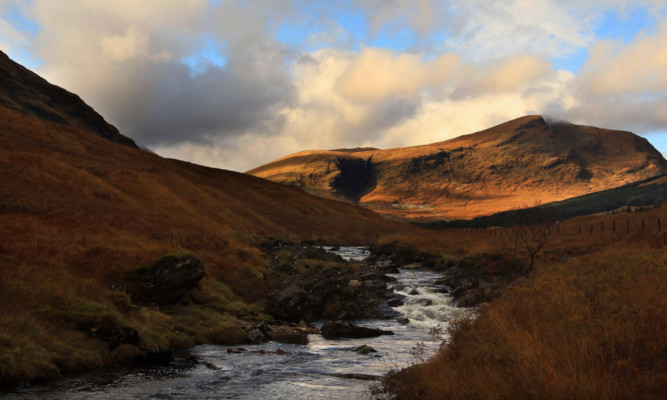Precious metals prospector Scotgold suffered a pre-tax loss of £642,873 for the six months to December, due in part to spending more than £100,000 on exploration.
The Australian company’s activities are centred on the Cononish gold and silver project in the Loch Lomond and Trossachs National Park.
Scotgold had struggled with financing and wanted an extension of planning permission to give it time to raise the necessary finance for further surveys and drilling.
The gold reserve at Cononish was this year estimated to be greater than previously thought.
Scotgold was allowed to work a seam near Tyndrum 24 hours a day, six days a week, and extend to January 2018 the starting date for development.
A study suggested 248,000 ounces of gold could be found, on the basis of rock that had been assessed, and the quality of the gold was 9% better than previously estimated.
The total amount of rock that would be required for mining that gold was up by 176% to more than 541,000 tonnes.
A further assessment indicated 266,000 ounces of gold in 617,000 tonnes of rock, and that the quality of gold was up by 18%.
The gold is understood to be microscopic. The ‘electrum’ are described as “fine grained and generally less than 100 microns in size”.
Visible gold up to 2,000 microns is rare.
In its half-yearly report published yesterday, with figures given in Australian dollars, the company said its loss before tax was AUD1.2 million, compared to an AUD1m loss a year earlier.
The loss was pushed higher by AUD200,000 being spent on exploration.
Revenue for the half year was AUD9.141m (£4.7m), down from AUD12.429m (£6.43m) a year earlier.
Scotgold is continuing to review options for the Cononish gold and silver project.
Varied processing rates, strategic mining sequences and mining selectivity remain under review, along with options related to the construction, commissioning and production build-up periods.
The company has started work on using a 3D geological survey model for Cononish to assess the mining options, and a revised mine development plan is targeted for the second quarter of this year.
Scotgold is also conducting early-stage exploration work at Dalradian in the south-west Grampians, which it described as highly prospective for gold and potential base metal deposits.
Basic data from government surveys between the 1950s and 1970s is not thought to adequately reflect the potential of the area, and a large-scale stream sediment sampling programme is in progress.
Scotgold shares were down 9.38% to 0.721p yesterday.
